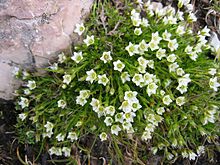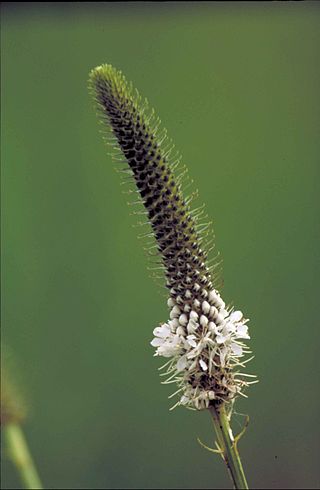| Minuartia | |
|---|---|
 | |
| Minuartia gerardii | |
| Scientific classification | |
| Kingdom: | Plantae |
| Clade: | Tracheophytes |
| Clade: | Angiosperms |
| Clade: | Eudicots |
| Order: | Caryophyllales |
| Family: | Caryophyllaceae |
| Genus: | Minuartia Loefl. (1753) |
| Type species | |
| Minuartia dichotoma L. | |
| Species [1] | |
67; see text | |
| Synonyms [1] | |
Minuartia is a genus of flowering plants commonly known as sandworts in the family Caryophyllaceae.
Contents
Minuartias are small annual or perennial plants which grow in otherwise inhospitable conditions such as on rocky ledges and in stony soil. Species are distributed in Eurasia and parts of Africa, including Europe, the Mediterranean region, northern and eastern Africa, the Caucasus, western and central Asia, Japan, and Far Eastern Russia. [2] [1]
Many Minuartia species were formerly classed in the genus Arenaria , and the obsolete genus Alsine. In 2014, the polyphyletic Minuartia sensu lato was recircumscribed, with many of the species transferred to other genera, including Cherleria , Eremogone , Facchinia , Mcneillia , Minuartiella , Mononeuria , Pseudocherleria , Rhodalsine , Sabulina , and Triplateia . [2] Minuartia sensu stricto is characterized by the following features: leaves linear-setaceous; 5 acute sepals with 3, 5, or 9-veins; 5 white petals; 3 styles, forming 3-parted capsules. [2]
The genus was named for Juan Minuart (1693–1768), a Spanish botanist and pharmacist. [3]







